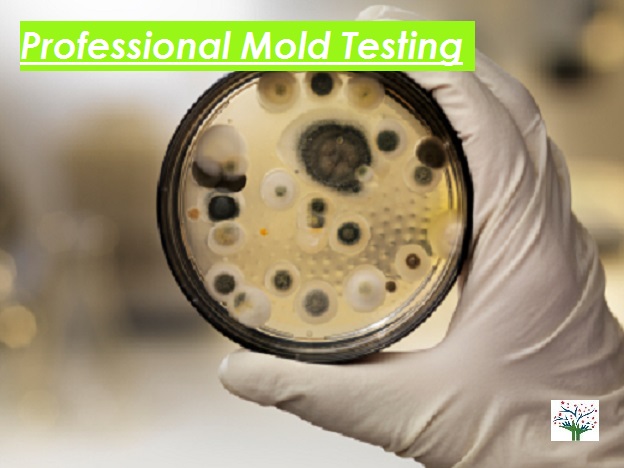Comprehensive Solutions for Your Mycotoxin testing Services Requirements
Comprehensive Solutions for Your Mycotoxin testing Services Requirements
Blog Article
Exactly How Mycotoxin Screening Helps Avoid Contamination and Secure Food Products

Mycotoxin testing is an important technique in the food industry, offering as a frontline protection against contamination by unsafe toxic substances generated by mold and mildews. Through the application of innovative techniques like High-Performance Liquid Chromatography (HPLC) and Fluid Chromatography-Mass Spectrometry (LC-MS), food producers can properly identify and measure mycotoxin levels in agricultural items.
Understanding Mycotoxins
Recognizing mycotoxins starts with recognizing that they are toxic second metabolites created by particular mold and mildews, which can contaminate farming items. These metabolites are not crucial for the growth or reproduction of the fungi yet can have extreme ramifications for animal and human health and wellness. Mycotoxins are typically discovered in staple crops such as corn, wheat, barley, and nuts, where they can multiply under details problems of wetness and temperature.
There are a number of types of mycotoxins, each produced by different fungal varieties. Fusarium varieties create trichothecenes and fumonisins, both of which are associated with numerous intense and persistent wellness problems.

Risks of Mycotoxin Contamination
The threats of mycotoxin contamination are diverse, presenting substantial dangers to both food security and public health. Mycotoxins, toxic substances created by certain kinds of fungi, can contaminate a large array of farming items including cereals, nuts, spices, dried out fruits, and coffee.
Economic effects are one more significant problem. Polluted plants can lead to significant financial losses for farmers and food producers as a result of reduced returns and the demand for pricey purification measures. Moreover, international trade can be considerably prevented as nations impose stringent mycotoxin laws to shield their populations, causing rejected deliveries and strained trade connections.
Environmental factors such as climate adjustment worsen the threat of mycotoxin contamination. Variants in temperature and moisture can create positive conditions for fungal development, increasing the possibility of contamination events. Therefore, understanding and minimizing these dangers are critical for ensuring the safety and security and stability of worldwide food materials.
Methods of Mycotoxin Examining
Properly identifying mycotoxin contamination in agricultural items is important for guarding public health and wellness and preserving food security standards. Numerous techniques are employed to spot and measure mycotoxins, each offering specific benefits and restrictions.
High-Performance Liquid Chromatography (HPLC) is a commonly utilized approach due to its high sensitivity and precision. It involves dividing mycotoxins from various other materials in an example, making it possible for exact quantification. Similarly, Liquid Chromatography-Mass Spectrometry (LC-MS) combines liquid chromatography with mass spectrometry to provide thorough molecular details, making it especially useful for identifying several mycotoxins simultaneously - Mycotoxin testing Services.

Gas Chromatography-Mass Spectrometry (GC-MS) and Thin-Layer Chromatography (TENDER LOVING CARE) are also utilized, each with special applications. GC-MS is effective for volatile mycotoxins, while TLC provides a simpler, cost-efficient choice for initial screening.
Benefits of Regular Examining
Normal screening for mycotoxins in agricultural items supplies many benefits, considerably adding to public health and wellness and food safety. By recognizing contamination early, regular site here testing assists stop the distribution of hazardous foods, thereby decreasing the threat of mycotoxin-related health problems amongst consumers. This proactive approach not just safeguards human health but likewise enhances the general quality of food products.
Different nations and areas have developed strict restrictions for mycotoxin degrees in food and feed. Adhering to these limitations via normal screening makes certain that manufacturers and vendors satisfy legal requirements, thus avoiding penalties and profession barriers.
In addition, routine mycotoxin screening can lead to considerable financial benefits. Early detection of contamination enables for prompt treatment, decreasing possible losses from prevalent contamination. Applying regular screening protocols can likewise reduce recall prices and related liabilities, which can be financially ravaging.
Additionally, routine testing offers beneficial data that can notify better farming methods and storage conditions. By understanding patterns of contamination, producers can embrace safety nets, visit this page thereby decreasing future threats and contributing to the sustainability of the food supply chain.
Implementing Testing Methods
Carrying out effective mycotoxin screening procedures is crucial for making certain the security and quality of farming items. Each phase must be inspected to pinpoint where mycotoxin contamination is most likely to take place.
When critical control factors are identified, choosing suitable screening techniques is essential. Typical techniques consist of enzyme-linked immunosorbent assay (ELISA), high-performance liquid chromatography (HPLC), and mass spectrometry (MS) Each approach has its weaknesses and toughness; therefore, picking the appropriate one depends on the certain mycotoxin being evaluated, the called for sensitivity, and readily available resources.

Last but not least, integrating the screening procedures right into an extensive food safety and security administration system is advisable. This improves traceability and enables quick corrective activities when contamination is detected, therefore protecting the honesty of the food supply chain.
Final Thought
Mycotoxin testing is necessary in avoiding contamination and securing food supplies by allowing early detection of unsafe toxic substances generated by molds in farming items. Advanced methods such as HPLC and LC-MS make sure conformity with safety guidelines and shield consumers from health dangers. Regular screening boosts brand name online reputation, financial stability, and rely on food safety by lessening contamination-related losses and maintaining high requirements in food manufacturing. Executing strenuous screening protocols is thus critical for the sector's general well-being.
Mycotoxin testing is an important method in the food market, serving as a frontline defense versus contamination by unsafe contaminants generated by molds. An integrated approach involving farming techniques, storage space administration, and regular screening can minimize the dangers connected with mycotoxin contamination, guaranteeing food safety and public wellness.
The dangers of mycotoxin contamination are diverse, posing substantial hazards to both food security and public health.Normal screening for mycotoxins in agricultural items uses various benefits, dramatically contributing to public health and food safety and security.Mycotoxin testing is essential in protecting against contamination and protecting food supplies by making it possible for early discovery of dangerous toxic substances generated by molds in farming items.
Report this page